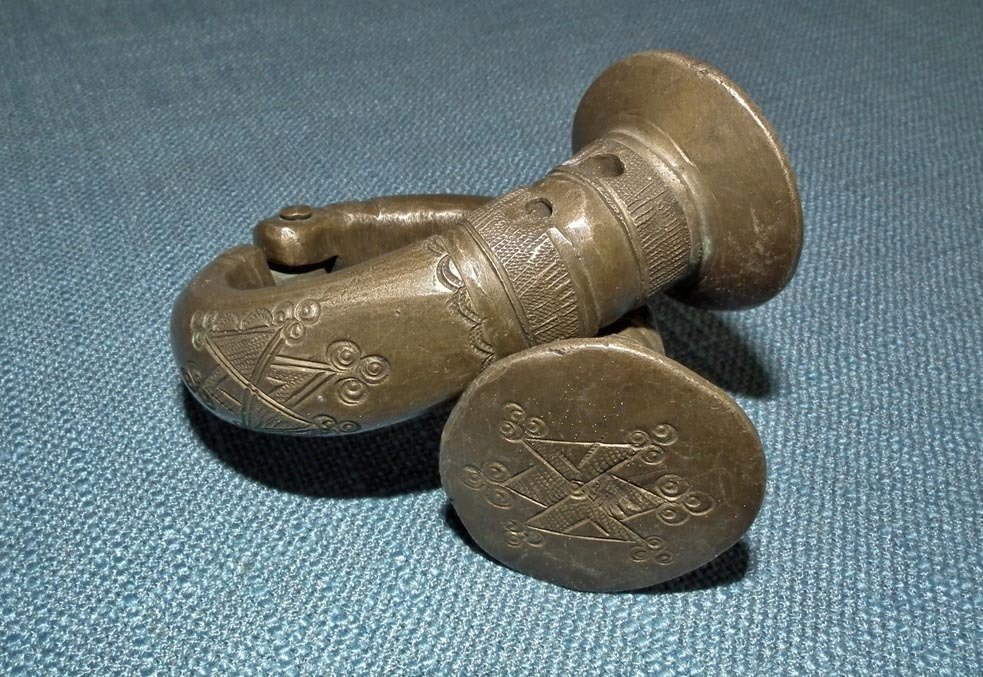
SOLD Antique Tribal African Islamic Tuareg - Fulani Bracelet Currency Money Manilla

IS366
SOLD Antique, African, Tribal Islamic Tuareg Fulani slave bronze bracelet, money-currency, composed of two separately cast parts, joined by the hinge with two disc shaped finials which overlap one another, adorned on the surface with a hand chased traditional Tuareg Fulani ornaments and pierced with holes to lock the two parts. Late 19th - early 20th century, Mali/Niger – Africa. These bracelet forms, called Manilla, or Elkiss, were recognized and traded as currency, and were also used as bracelets.
From the 15th century till the mid-20th century manilla currency of bracelet forms were widely used in Africa as the currency, often for the slave trade from the 15th century till the mid-20th century. The name manilla, had been derived from the Spanish for bracelet, manella, also the Protuguese for hand ring. Manillas came in different types, varying in value and areas where they could be used. It is reported that in the late 1800's, in Nigeria, there were 5 different forms of manilla in use. The Anthony manilla was good for use in all markets; the Congo simgolo was only good for use in the Opungo market; the Onadoo was good for use in the Calabar Kingdom (Igbo area between Bonny and New Kalabari); the Finneman fawfinna was used in Juju town and Qua market, but was only worth half of what the Anthony manilla was; and the Cutta Anthony which was used by the people at Umballa.
The earliest reported use of the manilla was documented in 1505 at Calabar, the capital city of the ancient Calabar Kingdom of Southeastern Nigeria, where they were used as a medium of exchange, one manilla being worth a big elephant tooth, and a slave cost between eight and ten manillas. The Tuareg, nomads who travel all over the Sahara Desert, are primarily herders and traders. Skilled craftsmen made elegant forms from brass and silver metals. These brass forms were recognized and traded as currency, yet some were also used as bracelets.
DIMENSIONS: Approximately; the exterior in open position as on the second picture. Diameter 11.5 cm (4.53 inches) at its widest point at the rim of the disc finials; opening 4.5 cm (1.77inches).
Height of the finials 4.2 cm (1.65 inches).
Weight: 530 grams (18.7 ounces).

